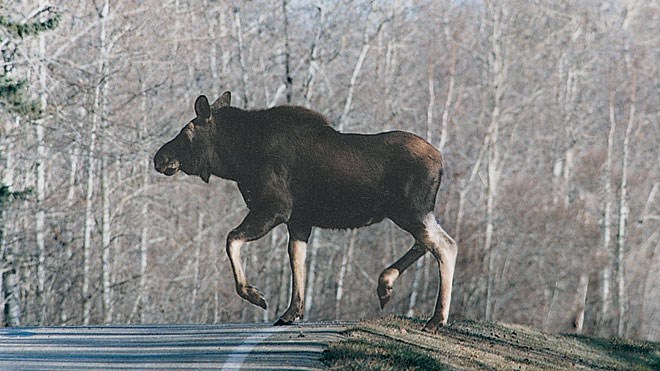Ontario boasts some of the most scenic driving for those who live in and visit the province’s vast rural communities, but it comes with a cost with more than 10,000 drivers a year being involved in wildlife collisions.
Over the past five years (2009 to 2013), close to 60,000 wildlife collisions were reported to the OPP. Nineteen of the people involved in these collisions died and more than 2,200 of them sustained injuries.
OPP data show that spring and fall are times when motorists driving in rural areas need to be extra cautious as wildlife becomes more active.
It is important to remember that deer, moose and elk crossing signs are only posted where there are frequent sightings or crossings, however, these animals can be seen anywhere at any time. Drivers should maintain a heightened level of awareness when driving in rural areas that are absent of these signs.
The OPP is reminding motorists that they can take precautions to reduce their risk of a collision with wildlife:
-Scan the road ahead from shoulder to shoulder. Moose, elk and deer are particularly active in the spring, especially at dawn and dusk, as they search for food. Deer rarely travel alone, so when motorists see one there are likely more nearby.
-Watch your speed and be careful when driving at night. Slowing down will give you more time to respond. Avoiding driving after dark when possible can greatly reduce the risk of colliding with an animal.
-Brake firmly if an animal is standing on or crossing the road, stopping if necessary. Swerving to avoid hitting a wild animal may result in loss of control and a more serious collision. If you do encounter large wildlife such as deer, moose, elk or bears on the road and can safely avoid hitting them, do so, but be absolutely certain that oncoming traffic or soft shoulders do not put you and others at risk.
-Do not direct your full attention to the animal when you take measures to avoid hitting it, because this almost always results in colliding with the animal. Instead, focus your attention on the alternative route you decide to take, again only if this manoeuvre doesn’t place you and others in danger.
Join Sudbury.com+
- Messages
- Post a Listing
- Your Listings
- Your Profile
- Your Subscriptions
- Your Likes
- Your Business
- Support Local News
- Payment History
Sudbury.com+ members
Already a +member?
Not a +member?
Sign up for a Sudbury.com+ account for instant access to upcoming contests, local offers, auctions and so much more.



